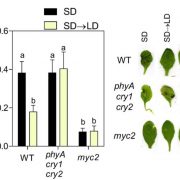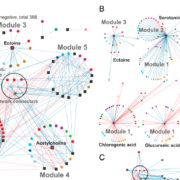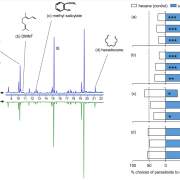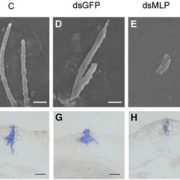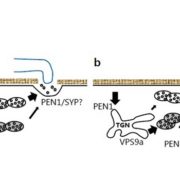LTPs participate in preinvasive defense against powdery mildew pathogens (Mol. Plant Pathol.)
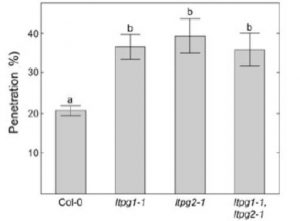 Plant lipid transfer proteins (LTPs) display a strikingly clear capacity to bind lipidic molecules yet their mechanistic role in plant developmental or stress physiology is not yet clear. In a recent study published in Molecular Plant Pathology, Fahlberg et al. (2018) investigated the role of glycophosphatidylinositiol-(GPI)-anchored LTPs in resistance to non-adapted powdery mildew pathogens in Arabidopsis. The authors found that the loss of several LTPGs (LTPG1, 2, 5, or 6) led to enhanced susceptibility to the grass powdery mildew pathogen Blumeria graminis sp. hordei. Enhanced susceptibility in these mutants was associated with increased prevalence of fungal penetration of the epidermal cell wall, suggesting that LTPGs play a key role in pre-invasive defense against filamentous pathogens. This idea was further supported by protein localization studies demonstrating that LTPG1 accumulates at Bgh penetration sites where plants actively deposit cell wall materials in an effort to suppress pathogen invasion. Together, these data demonstrate that LTPGs contribute to non-host resistance to filamentous pathogens. (Summary by Phil Carella) Mol. Plant Pathol. 10.1111/mpp.12740
Plant lipid transfer proteins (LTPs) display a strikingly clear capacity to bind lipidic molecules yet their mechanistic role in plant developmental or stress physiology is not yet clear. In a recent study published in Molecular Plant Pathology, Fahlberg et al. (2018) investigated the role of glycophosphatidylinositiol-(GPI)-anchored LTPs in resistance to non-adapted powdery mildew pathogens in Arabidopsis. The authors found that the loss of several LTPGs (LTPG1, 2, 5, or 6) led to enhanced susceptibility to the grass powdery mildew pathogen Blumeria graminis sp. hordei. Enhanced susceptibility in these mutants was associated with increased prevalence of fungal penetration of the epidermal cell wall, suggesting that LTPGs play a key role in pre-invasive defense against filamentous pathogens. This idea was further supported by protein localization studies demonstrating that LTPG1 accumulates at Bgh penetration sites where plants actively deposit cell wall materials in an effort to suppress pathogen invasion. Together, these data demonstrate that LTPGs contribute to non-host resistance to filamentous pathogens. (Summary by Phil Carella) Mol. Plant Pathol. 10.1111/mpp.12740


